About the Research Centers
Each of the four research centers has its own characteristics. These characteristics will be presented by a representative of each center.
The Elements Strategy Initiative Center for Magnetic Materials (ESICMM)
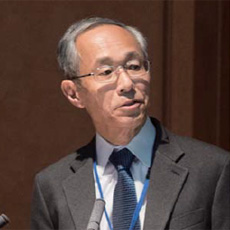
Core:National Institute for Materials Science (NIMS)
Satoshi Hirosawa, Director General
Research Outcomes of the Second Phase (2015–2017)Research Outcomes of the third Phase (2018–2021)
Permanent magnets are multiphase materials comprising a combination of substances having different functions. We are developing new high-performance magnets that effectively exhibit these functions. At ESICMM, we promote research through collaboration with industry, academia, and government aimed at formulating scientific theories on magnetic research. (Chiharu Mitsumata, Representative of ESICMM)
A poster presentation at a symposium held under the theme of industry, government, and academia collaboration (the speaker in the center facing the camera is Dr. Masato Sagawa, the inventor of the neodymium magnet)
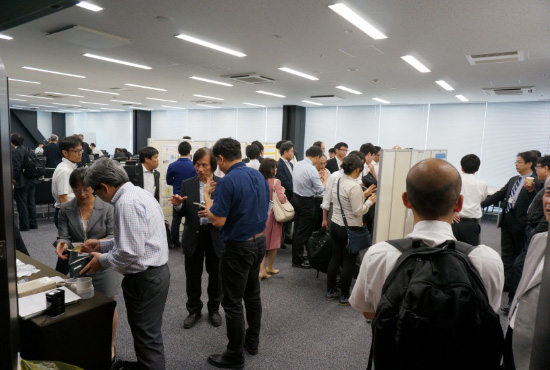
Element Strategy Initiative Center for Magnetic Materials (ESICMM)
Related projects
Technology Research Association of Magnetic Materials for High-Efficiency Motors (MagHEM)
Center for Materials research by Information Integration(Mi2i)
Tokodai Institute for Element Strategy (TIES)
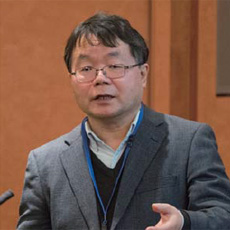
Core:Tokyo Institute of Technology
Hideo Hosono, Representative
Research Outcomes of the Second Phase (2015–2017)Research Outcomes of the third Phase (2018–2021)
TIES comprises the Tokyo Institute of Technology, NIMS, KEK, and the University of Tokyo as members. In light of the project being ten years in duration, principal investigators (PI) were primarily appointed from among younger researchers in their 40s. Activities of TIES are managed at the Tokodai Institute for Element Strategy (see photo; completed in March 2015), which is the only research institute bearing the name “element strategy.” (Hideya Kumomi, Representative of TIES)
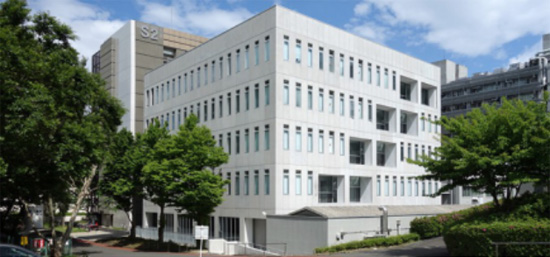
Tokodai Institute for Element Strategy (Tokyo Institute of Technology)
Related projects
The project “Defect Functionalized Sustainable Energy Materials: Design to Devices Application” was adopted in 2018 under the Japan Society for the Promotion of Science (JSPS) Core-to-Core Program.
http://www.jsps.go.jp/j-c2c/jisshichu_a.html
http://www.jsps.go.jp/j-c2c/data/jisshi/A/h30/30-6_Tokyokougyo_H30gaiyou.pdf
By establishing international collaboration between TIES, as a research center in Japan, and the University College of London in England and McGill University in Canada, as overseas research centers, we are forming partnerships in an effort to expand the element strategy internationally.
Elements Strategy Initiative for Catalysts and Batteries (ESICB)
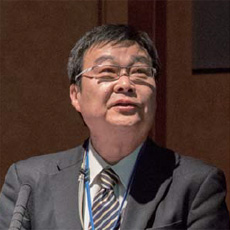
Core:Department of Molecular Engineering, Kyoto University
Tsunehiro Tanaka, Director
Research Outcomes of the Second Phase (2015–2017)Research Outcomes of the third Phase (2018–2021)
At this center, we strive to develop high-performance catalysts and secondary batteries free of rare elements. We are particularly focused on finding substitutes for rare metals in automotive catalysts and substituting sodium for lithium in secondary batteries. This also involves establishing methodologies for discovering substitutions and clarifying the guiding principles for controlling catalytic and cell reactions. (Koji Ohta, Representative of ESICB)
The principles and applications of batteries and catalysts developed at ESICB

Related projects
JST project: ALCA-Specially Promoted Research for Innovative Next Generation Batteries (ALCA-SPRING)
NEDO project: Development of Basic Technology for Innovative Batteries to Surpass Lithium-Ion Batteries (RISING2)
Post-K Computer, Priority Issue 5: Development of New Fundamental Technologies for High-Efficiency Energy Creation, Conversion/Storage, and Use
Elements Strategy Initiative for Structural Materials(ESISM)

Core:Department of Materials Science and Engineering, Kyoto University
Isao Tanaka, Director
Research Outcomes of the Second Phase (2015–2017)Research Outcomes of the third Phase (2018–2021)
Strength and ductility are intrinsically important properties for structural materials. We are pursuing compatibility between strength and ductility by clarifying the functions of elements. By conducting thorough basic research on “ultimate properties” aimed at ensuring a secure and untroubled society, we are contributing to the deepening of our knowledge and the formulation of a new concept. To ensure sustainable development in Japan, we are also nurturing energetic young personnel that will carry the torch for the next generation. (Kiichiro Oishi, Representative of ESISM)
Pursuing scientific principles of materials that achieve both strength and ductility

Element Strategy Initiative for Structural Materials(ESISM)
Related projects
Innovative Structural Materials Association(ISMA)
Cross-ministerial Strategic Innovation Promotion Program (SIP) Structural Material for Innovation
National Institute for Materials Science Research Center for Structural Materials(RCSM)